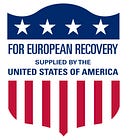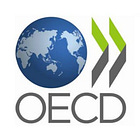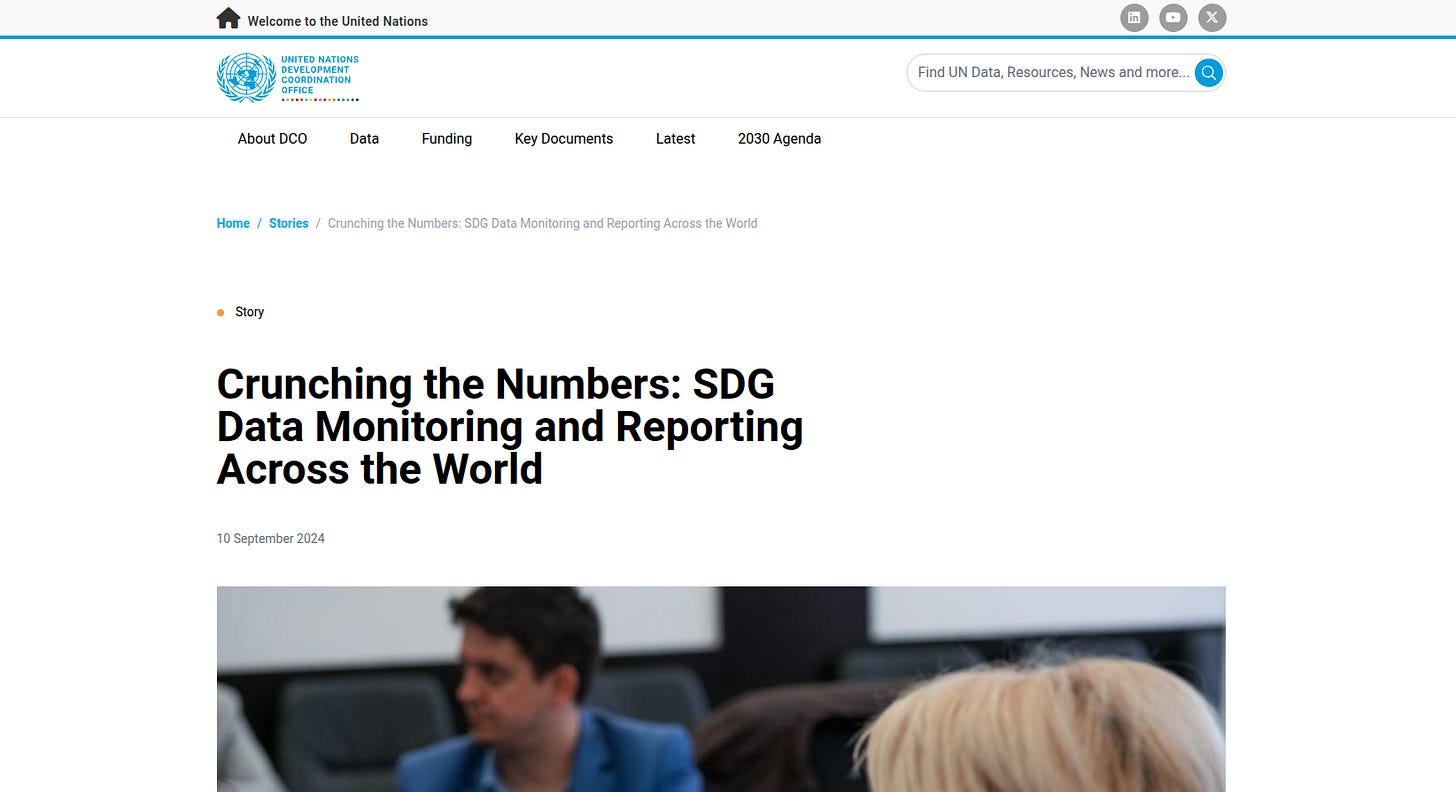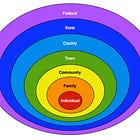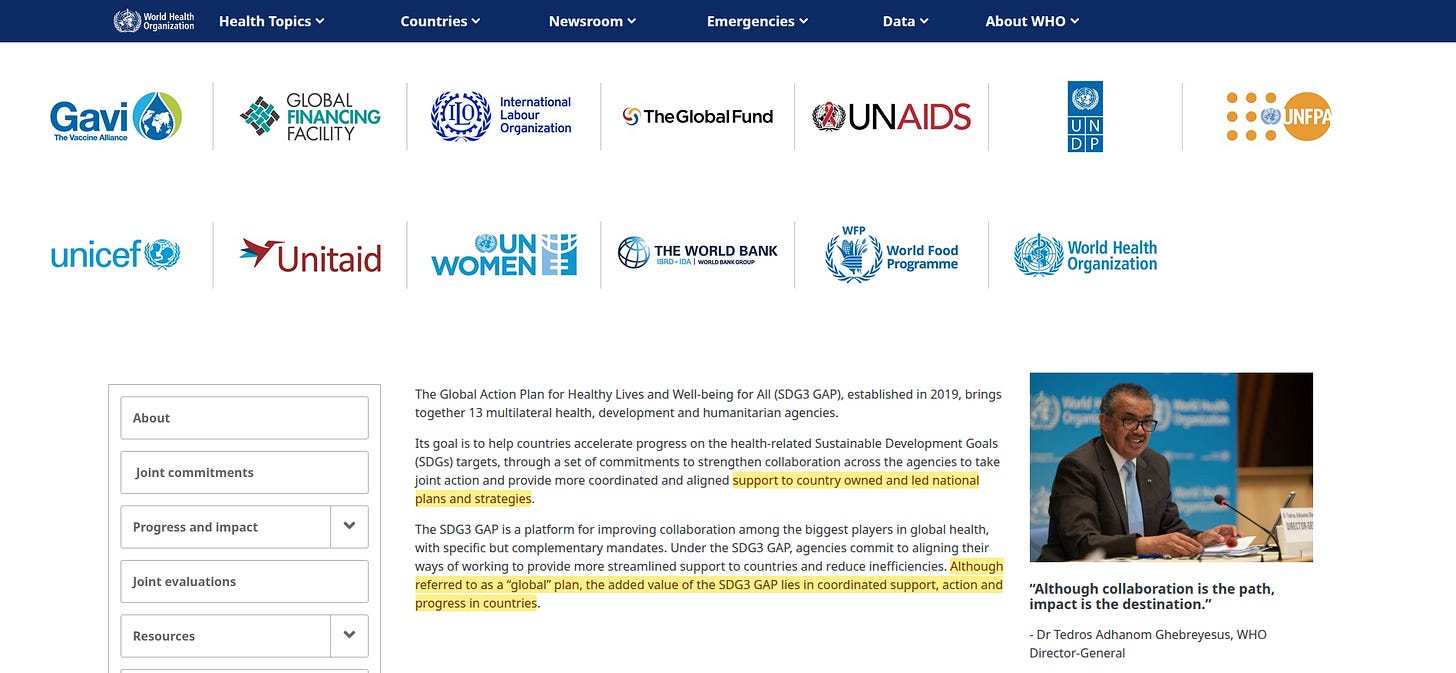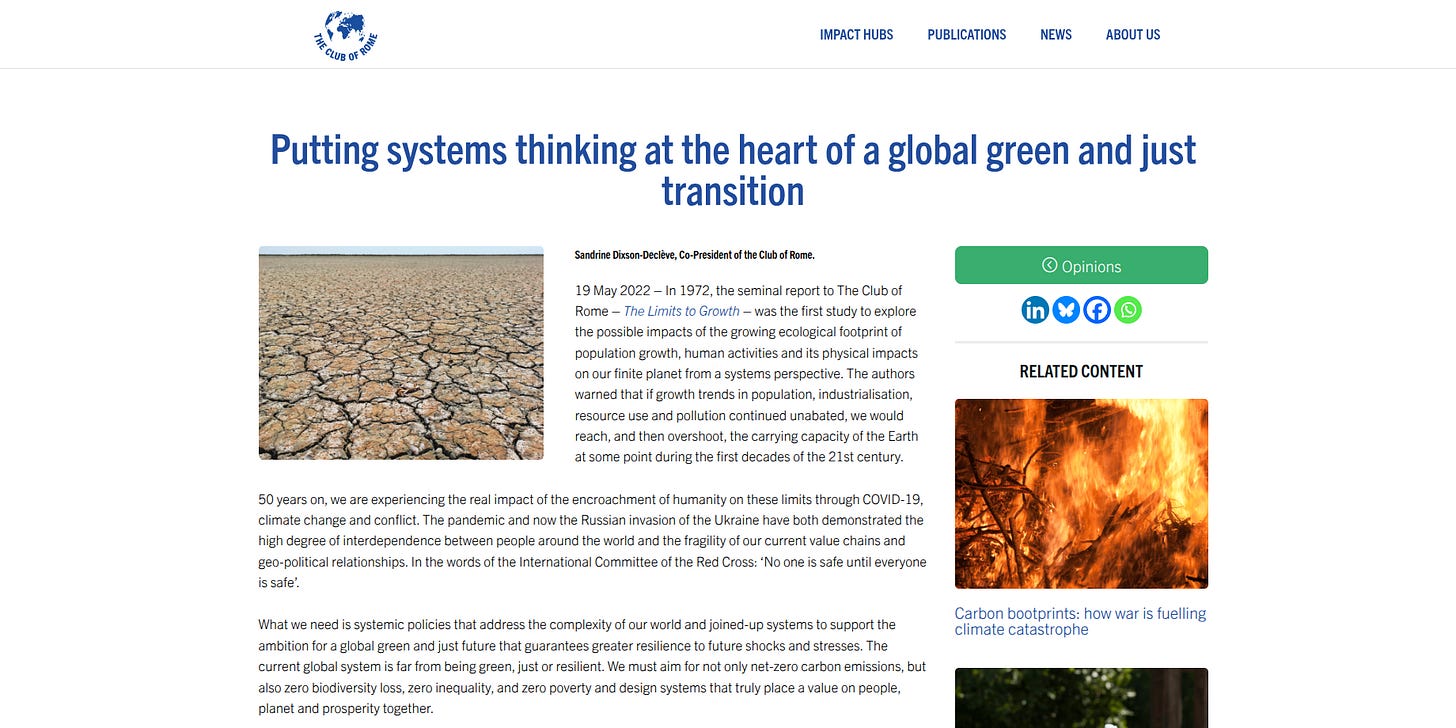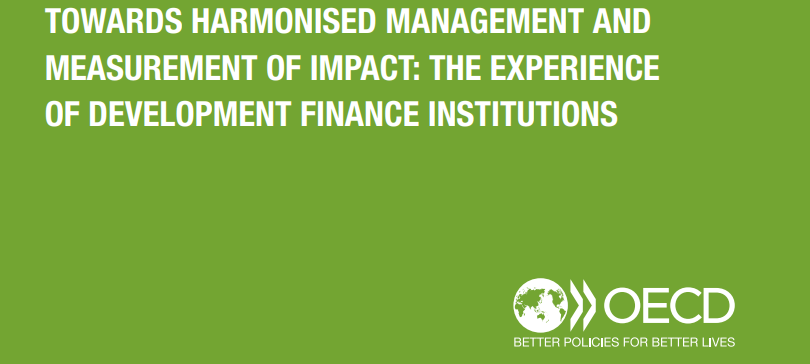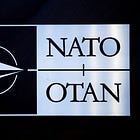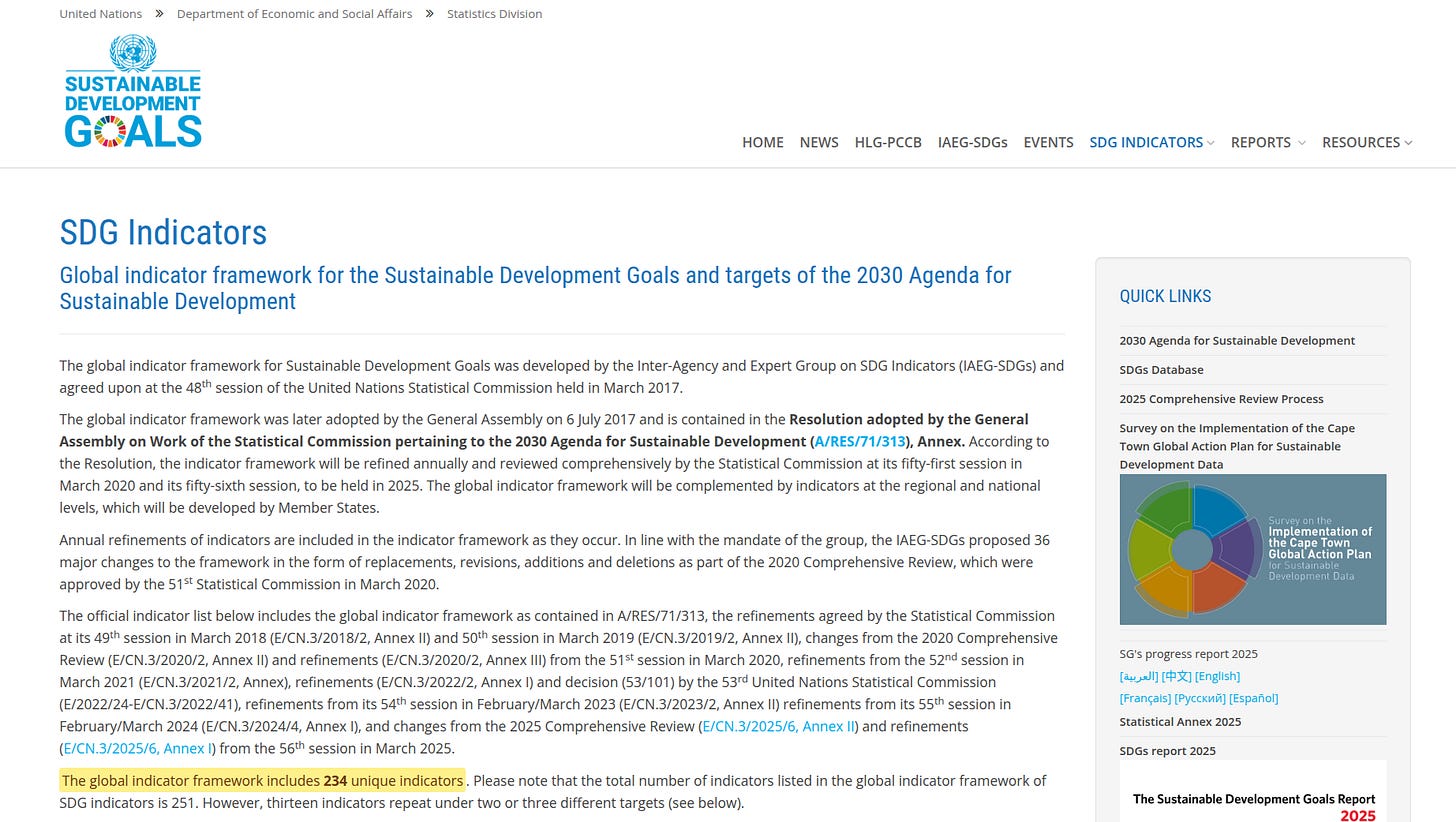Scaling the Template
The Marshall Plan - Part 3
The Marshall Plan's bridges built Europe's visible architecture of cooperation. Its hidden financial rails — the BIS, IMF, and World Bank — created the control systems that made sovereignty transformation irreversible. But this was never intended as a European experiment. From the beginning, the architects envisioned a planetary system where access to money itself would be conditional on compliance — a global operating system disguised as development aid and social justice.
By the 1960s, the template was ready for planetary deployment: financial assistance tied to comprehensive planning, access to liquidity converted into political leverage, and money weaponised through indicators that rationed participation in global systems. The same logic that had rewired European governance in postwar Europe would now be applied to the entire world through the United Nations, development aid, and technocratic management systems.
What emerged was not global government in any conventional sense, but a monetary operating system that could coordinate behavior across sovereign boundaries through the unit of account — administered as indicators, incentives, and dependencies.
The Marshall Plan had been the prototype. Now came the global rollout.
The Template Goes Global (1960s)
In 1961, the United Nations launched the First Development Decade1 with explicit reference to the Marshall Plan's success. The model was direct: just as Europe had been rebuilt through conditional aid tied to measurable targets, so too could the developing world be ‘modernised’ through comprehensive national development plans submitted to international oversight.
That same year, the United States created the Agency for International Development2 (USAID) to administer large-scale foreign aid. But unlike simple bilateral assistance, USAID required recipient countries to submit multi-year development strategies, statistical baselines, and progress indicators3. Access to dollars flowed only to governments that embedded their domestic planning within international frameworks, making finance itself the enforcement mechanism4.
This was Marshall logic at planetary scale: money as payload, compliance as outcome, sovereignty redefined as conditional access to the global unit of account.
The OECD5 and UN Statistical Office6 began harmonising data collection across continents7, creating the first truly global dashboard of economic and social indicators8. What had once been Europe's internal coordination mechanism — shared metrics enabling joint planning — became the universal grammar of conditional finance.
The template's power lay in its apparent voluntarism. No country was technically forced to participate. But as with postwar Europe, non-participation meant exclusion from the networks of aid, trade, and technical assistance that were increasingly essential for economic survival. Participation appeared voluntary, but the cost of opting out was monetary isolation.
McNamara and the Technocratic Revolution
The real transformation came when Robert McNamara moved from the Pentagon to the World Bank presidency in 19689, bringing with him the Planning-Programming-Budgeting System (PPBS) that had revolutionised military management.
PPBS was more than an accounting method — it was a philosophy of governance. Every program was broken into objectives, inputs, activities, outputs, and measurable outcomes10. Finance flowed only to programs that could demonstrate quantifiable results; unsuccessful ones were terminated or restructured11. Human activity was reduced to optimisable processes.
Under McNamara, the World Bank's lending increased sixfold12. But more importantly, Bank loans were no longer just for infrastructure — they financed comprehensive social transformation through health, education, family planning, and rural development programs, with access to funds strictly conditional on measurable performance targets13.
For the first time, international aid functioned as comprehensive population management, reaching into the most intimate aspects of human life — birth rates, nutritional intake, educational achievement, agricultural practices. Every intervention generated data that fed back into the planning system, creating a closed loop of measurement, adjustment, and optimisation.
This was the globalisation of what had been tested first in European reconstruction — the weaponisation of finance into a mechanism of social engineering, converting human societies into administered objects of expert planning, managed through statistical feedback and conditional resource flows.
PPBS as Recursive Operating Logic
McNamara's PPBS represented the operationalisation of recursive, holonic14 governance at global scale. Each program element functioned like a systems theory implementation of a Leibnizian monad15 — self-contained yet perfectly coordinated with every other element through the overarching system architecture.
Local health programs fed data upward to national health strategies. National strategies were nested within regional frameworks. Regional targets aligned with global objectives set by WHO, World Bank, and UN agencies16. Each level appeared autonomous while being systematically coordinated through shared indicators and conditional finance tied to those indicators.
The genius of this holonic structure was that coordination emerged from the system environment rather than direct control. Countries weren't commanded to align their policies — they were incentivised to do so through access to resources, technical assistance, and international legitimacy. Compliance appeared voluntary while financial dependency made it structurally inevitable.
This recursive logic would later evolve into what policymakers called ‘adaptive management’, with clearinghouse expert panels continuously monitoring indicators and ‘tuning’ global systems in real time. But at this stage, the mechanism was still primarily mechanical — a vast cybernetic machine that cleared compliance through finance, processing human societies via standardised ‘indicator’ inputs and measurable outputs.
Club of Rome and Spaceship Earth
The environmental movement of the early 1970s provided the perfect vehicle for globalising Marshall-style oversight. The Club of Rome — founded in 1968 as a quasi-offshoot of OECD networks — applied the same input-output analysis originally developed for European reconstruction to planetary resource flows.
Their landmark report, ‘The Limits to Growth’17 (1972), used computer modeling to demonstrate that Earth itself was a closed system requiring careful management of material and energy flows. Kenneth Boulding's metaphor of ‘Spaceship Earth’18 had naturalised the idea that planetary survival depended on expert coordination of global resources through scientific management, and the Club of Rome justified it.
This wasn't about environmental protection — it was the intellectual foundation for converting the planet into a managed system. Every ton of carbon, every barrel of oil, every acre of forest could now be accounted for as a unit of measurement, tied to international compliance regimes and financial incentives. What coal and steel had been for European integration, carbon and biodiversity became for conditional global governance.
The Club of Rome's systems thinking19 provided the conceptual bridge between Marshall Plan reconstruction metrics and today's Planetary Boundaries20 framework, Circular Economy21 models, and climate governance systems. All shared the same underlying logic: complex systems require expert management through indicators that link measurement directly to access, finance, and participation.
The Age of Indicators (1980s-1990s)
By the 1980s, the next operating system upgrade was complete. The World Bank and UN Development Programme had standardised Logical Framework Analysis22 — PPBS adapted for development aid — as their universal operating procedure. Every program required log-frames23 mapping inputs to outcomes through measurable indicators, turning finance into a flow conditional on quantified performance.
This created what might be called ‘governance by dashboard’ — political decisions increasingly driven by statistical performance rather than democratic debate. The Human Development Index24 (1990) pioneered the ranking of entire countries against composite metrics. World Development Indicators25 became the global scorecard determining who could access aid, investment, and international standing.
The crisis ratchet mechanism, perfected during European reconstruction, now operated globally. Each development emergency — debt crisis, famine, structural adjustment — became justification for deeper statistical oversight and expanded conditionality. Temporary monitoring ‘for the duration of the crisis’ consistently hardened into permanent infrastructure, making conditional finance the permanent architecture of sovereignty.
OECD environmental and social indicators26 proliferated across every domain of policy. Education (PISA scores)27, health (WHO statistics)28, governance (World Bank metrics)29, competitiveness (WEF rankings)30 — every aspect of national performance was quantified, compared, and used to determine international treatment. Indicators became gatekeepers to money, markets, and legitimacy.
The transformation was profound: from aid as emergency assistance to aid as a permanent performance management regime. Countries weren't just borrowing money — they were subscribing to a global operating system that measured, ranked, and optimised their domestic policies according to international standards.
Results-based management31 had become the universal language of global governance, spoken fluently by governments, NGOs, international organisations, and corporations. Monetary conditionality embedded in statistical compliance had replaced democratic legitimacy as the primary source of political authority.
Impact investment32 translated this logic into private finance33. Capital was no longer allocated simply for profit potential, but for measurable ‘social returns’ benchmarked against ESG and SDG indicators. Every investment became a contract of conditionality, with repayment terms, interest rates, and access to further funds tied directly to demonstrated performance.
Blended finance accelerated this migration, pooling public guarantees and concessional aid with private capital so that risk was socialised while conditionality — and profit — was privatised. Aid money became the catalyst for leveraging far larger pools of institutional investment, but always on the basis of indicator compliance. The result was a seamless pipeline: public funds structured the risk environment, private capital enforced performance metrics, and together they turned development itself into an investable asset class.
What began as aid conditionality had now migrated into markets themselves, turning global finance into a continuous clearinghouse of compliance.
From Development to Health: The Equity Clearinghouse
The 2000s witnessed the expansion of this logic beyond traditional development into comprehensive ‘social determinants of health’. The World Health Organization's 2008 report ‘Closing the Gap in a Generation’34 established that anything affecting life outcomes — poverty, education, environment, governance, even emotional wellbeing — fell under health jurisdiction and therefore international oversight.
Health became the perfect vehicle for total scope expansion precisely because it was universal — every human being is a ‘health subject’, making no domain of policy immune from health-justified intervention. What had begun as economic planning now morphed into population-wide management under the banner of health. Climate change, inequality, governance, trade policy, urban planning — all became ‘health issues’ under the ‘One Health approach’, requiring coordinated global response through shared indicators and conditional assistance.
The COVID-19 pandemic operationalised this framework on an unprecedented scale. New treaties and agreements — from strengthened International Health Regulations to the proposed Pandemic Treaty — established what could only be described as a planetary Health Equity Clearinghouse.
Just as the European Payments Union35 had once cleared currencies, this system now cleared compliance across all domains of life, with finance, trade, and resources released only to those meeting performance scores. Access to vaccines, research funds, technology transfers, and international markets increasingly depended on satisfying metrics across comprehensive social determinants.
The Marshall Plan's original logic — aid conditional on coordinated planning — had evolved into conditional access to global systems themselves, with sovereignty mediated through compliance with expert-defined health and development indicators.
The UN Emergency Platform: Six Levers of Coordination
The next phase is already visible. The UN has proposed a permanent Emergency Platform36 to coordinate responses to ‘complex global shocks’ that cascade across health, environment, finance, and security domains.
When activated, the Platform would simultaneously trigger six enforcement mechanisms that together constitute a complete operating system for planetary governance — a compliance-clearinghouse directly modeled on the logic of the European Payments Union:
Accreditation standards determine who can participate in international markets and institutions. Non-compliant actors face systematic exclusion from global networks.
Financial routing ties all capital flows to Environmental, Social, and Governance (ESG) and Sustainable Development Goal (SDG) compliance scores, making access to credit and investment conditional on statistical performance. This mechanism was perfected through the Financial Stability Board's Task Force on Climate-related Financial Disclosures37 (TCFD) and Bank for International Settlements guidelines that embedded sustainability metrics directly into banking regulation, insurance requirements, and investment fund mandates38.
Digital identity systems link individual access to services, travel, and economic participation to framework alignment, creating behavioral incentives at the personal level.
Audit obligations convert sustainability targets into legal liabilities, making non-compliance financially ruinous through insurance, regulatory, and litigation mechanisms.
Data governance controls who can build alternative models or challenge official metrics, ensuring intellectual dominance of approved frameworks.
Procurement leverage locks supply chains to compliance requirements, making economic participation conditional on adherence to global standards.
Together, these mechanisms recreate the European Payments Union's logic at planetary scale: multilateral clearing of compliance rather than currency, automatic penalties for non-participation, and conditional access to essential global utilities. The transformation from Marshall Plan ‘counterpart funds’ to IMF structural adjustment to ESG-conditioned finance represents the same mechanism scaled and refined across seven decades.
The result is what can only be described as conditional sovereignty — states retain formal independence, but their substantive powers are exercised only within parameters set by international experts managing global dashboards.
The Crisis Ratchet
This system operates through what might be called a ‘crisis ratchet mechanism’ — the deliberate conversion of temporary emergencies into permanent governance. Each global shock — financial crisis, pandemic, climate emergency, security threat — becomes the justification for deeper integration and expanded oversight.
Emergency measures — introduced as ‘temporary’ responses — quickly solidify into standing infrastructure that cannot be rolled back. The 2008 financial crisis embedded ESG requirements into global finance39. COVID-19 normalised international health oversight40. Climate change is driving comprehensive sustainability monitoring41.
Each crisis strengthens the clearinghouse system while making exit increasingly costly. What begins as voluntary coordination becomes hard-wired structural dependency, with access to liquidity, trade, and aid rationed through compliance metrics. Countries discover they cannot function outside the integrated systems of global monitoring, financing, and coordination.
The Marshall Plan perfected this formula in postwar Europe, where emergency aid created permanent dependencies. The same mechanism now operates at planetary scale, using successive crises to ratchet sovereignty into conditional participation — preserving the appearance of national choice while foreclosing real alternatives.
Conclusion: The World on Marshall's Operating System
What began as conditional aid to rebuild war-torn Europe has become the operating system of planetary governance. The bridges built visible cooperation; the rails created hidden control systems; the global rollout established universal dependency on expert-managed coordination through indicators, incentives, and institutional integration.
The logic remained consistent throughout: money as the weaponised unit of account, aid as payload, compliance as outcome, sovereignty as conditional access to liquidity and trade. The Marshall Plan demonstrated that the most effective form of control was not command but dependency — making alternatives prohibitively costly while preserving the appearance of choice.
Today's global governance represents the full flowering of this approach. The SDGs provide a universal moral operating system, measured through 234 indicators42. ESG finance ties compliance directly to capital flows. Health equity clearinghouses coordinate social determinants across all policy domains. Emergency platforms activate synchronised responses to complex global shocks.
This method of integration proved more durable than direct imperial control or ideological command. Where others ruled by force, it ruled by financial necessity. Where others created empires, it created economic dependencies.
The world inherited not just Marshall's aid, but Marshall's operating system. From European coal and steel statistics to planetary carbon accounting, from OEEC coordination to SDG compliance, from EPU clearing to ESG finance — the same conditional-finance template, scaled and refined across seven decades.
Sovereignty was never abolished. It was recast as a conditional license to participate in systems where access to money, credit, and legitimacy depends on compliance with expert-defined metrics.
The operating system runs so quietly that most users never notice it's there — until they try to run something else.



